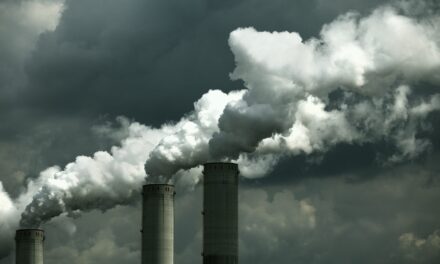I guess there are a couple of million people living around Great Salt Lake in Utah. They’re in for a really rude surprise. Sure, it’s a problem that the lake is drying up. Despite its salinity, the lake supports a lot of avian life and sea life thrives in its freshwater marshes and inlets, It’s a major source of the region’s water. And recreation is important to the Utah economy, so it’s not good that they’re pulling boats out of marinas to avoid them running aground.
But that’s the not the surprise.
Turns out that Brigham Young didn’t know that the soil in Utah has an abnormally high level of naturally occurring arsenic. So what happens is that this arsenic gets washed down the rivers and settles in the lakebed. It becomes very concentrated, but it’s also at the bottom of a freaking lake where it won’t do much harm.
But what happens after this concentration builds for a millennia or whatever, and then the lakebed suddenly gets exposed, is that arsenic-laden dust starts blowing around. We’re talking about toxic dust becoming part of the air that two million people breath. Mormons generally don’t drink and don’t smoke, and they take fewer risks (sexual and otherwise) than can lead to premature death. That’s why Utah has a very high life expectancy. In and around Salt Lake City, that could change.
Here’s the Centers for Disease Control explaining why you don’t want to breath arsenic all day long.
Arsenic, a naturally occurring element, can combine with either inorganic or organic substances to form many different compounds. Inorganic arsenic compounds are in soils, sediments, and groundwater. These compounds occur either naturally, or as a result of mining, ore smelting, or when using arsenic for industrial purposes…
…Unusually large doses of inorganic arsenic can cause symptoms ranging from nausea, vomiting, and diarrhea to dehydration and shock. Long-term exposure to high levels of inorganic arsenic in drinking water is associated with certain medical conditions. These conditions include skin disorders, an increased risk for diabetes, high blood pressure, and several types of cancer. Inorganic arsenic and arsenic compounds are considered to be cancer-causing chemicals.
Delaware Health and Social Services adds that breathing arsenic increases the risk of lung cancer and may lead to lower IQ scores in children. When pregnant women breath a lot of arsenic, their “unborn babies may die or be born with birth defects or at low birth weight.”
We’ve never seen this tested out on a major metropolitan area. We’ve also never seen such a big potential source of arsenic dust. After the Great Lakes of Michigan, the Great Salt Lake is the largest in the country.
At the moment, there’s still a protective crust on the exposed lakebed that’s keeping dust to a minimum, but that won’t last long. The drier it becomes, the larger and more frequent the dust storms will get.
“Keeping water in Great Salt Lake is the biggest thing that keeps me up at night,” said [Jaimi] Butler, a wildlife biologist who grew up around the lake and serves as coordinator for the Great Salt Lake Institute at Westminster College. “We’re on the doorstep of a catastrophe…Great Salt Lake will be an environmental, economic and, really, cultural catastrophe all in one,” she said.
…In November, Butler co-wrote an obituary for Great Salt Lake in Catalyst Magazine, based in the Utah capital.
“Great Salt Lake experienced her final glimmering sunset today, succumbing to a long struggle with chronic diversions exacerbated by climate change,” it began. “Her dusty remains will be scattered across the Salt Lake Valley for millennia — we will be constantly reminded of her passing by our air quality monitors.”
People can divert less water from reaching the lake, but it’s really climate change that’s driving this. It’s a runaway train, and you don’t stop a runaway train by fixing its brakes.








I’m going to push back on the lake as a water supply. The fresh water that usually flows into the lake from the mountains is being increasingly diverted for water supply to SLC, Orem, Ogden, West Valley City, etc. The arsenic is the true threat. Plus the wildlife that feeds on the brine shrimp will disappear (the lake is a major pelican breeding ground). Brine shrimp are used to feed tropical fish as well as commercial fish farms. The salt industry will eventually go away as well.
Arsenic is often found in layers of sub-soil in the India Bangladesh border – I raised funds for a NGO working in that area. Widespread arsenic in groundwater had given rise to excessive warts and other skin conditions!
Also sometime back I remember reading a Caltech Engineering and Science Magazine article that even in the headwaters of Los Angeles water near Mono Lake, there is significant amount of Arsenic. But there are bacteria that thrive in these conditions that convert from the more toxic +3 oxidation state to less toxic states (0 probably).
There might be ways to mitigate this chemically!
Bioremediation of soil contaminated with arsenic.
https://link.springer.com/chapter/10.1007/978-981-13-9117-0_14
Other modes of bioremediation can be used to remove arsenic from water, probably even salt water.
Sucks to be them! They shoulda listened 30 years ago! They were warned!
Climate change is a Chinese/Democratic Party hoax, and even if it’s real humans didn’t cause it, and even if they did Mormon Jesus will protect his chosen people. Etc, etc, ad nauseam.